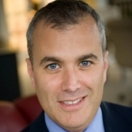
On Wednesday, colleagues from across the Administration and I met with chief human resource officers and other executives of nearly 30 companies and community partners to hear about their progress since they joined with the President to take on the challenge of long-term unemployment by committing to a set of best practices around hiring and recruiting.
Over the course of this year, real progress has been made in helping the long-term unemployed get back to work. The long-term unemployment rate has declined from 2.5 percent to 1.9 percent since the end of last year – reducing the ranks of the long-term unemployed by 900,000. And the companies that participated have been enthusiastic contributors to this promising trend.
But with long-term unemployment still at nearly twice its pre-crisis levels, we have to keep at it until everyone who wants to work gets a fair shot at a job. What was exciting about our discussion was hearing about the best practices companies have developed for more inclusive recruiting and hiring that are proving successful in helping to get the long-term unemployed back to work. And the executives we met with Wednesday are committed to working with the Administration to spread those best practices far and wide.
The topics we covered Wednesday included:
- Changing Practices to Remove Barriers Screening Out the Long-Term Unemployed: A number of companies have worked to remove artificial barriers that cause the long-term unemployed to get rejected before they even get a chance. Frontier Communications engaged in a trial experiment where they stopped checking credit histories as part of their hiring process – recognizing that the checks were not relevant to the positions they were looking to fill. At the end of the trial, Frontier found that many of the long-term unemployed who would have been screened out by a credit check had been hired and were performing just as well as other hires. Frontier has also started conducting video interviews as a first screen rather than only looking at resumes to eliminate biases against the unemployed. Comcast also moved to hiring for customer-facing roles based on competencies rather than a resume or recent work experience. Along those same lines, several companies, including CVS and Boeing, highlighted their efforts to retrain their recruiters and hiring managers to eliminate the stigma associated with gaps on resumes and other barriers to giving the long-term unemployed a fair shot
- Creating Partnerships to Recruit and Hire the Long-Term Unemployed: Several attendees, including KPMG and Wells Fargo, highlighted the value of local partnerships, including with American Job Centers, workforce boards, veterans groups, and other non-profits. For example, several organizations in attendance, including TrueBlue, CVS, and the University of Chicago system, have committed to hiring workers through a partnership with the non-profit Skills for Chicagoland’s Future. All of the hires through this program are previously unemployed, and, to date, 70 percent were long-term unemployed. One company said they had been able to validate that attrition was lower for candidates hired through these programs than for regular candidates. Two of the smaller manufacturing companies in attendance, E.J. Ajax and Sons and Optimax Systems, reported that they have each cooperated with competitors to set up joint training programs, which have been useful for hiring the long-term unemployed, returning veterans, and youth offenders.
The executives we met with consistently touted these changes as good business practices that helped them find the best talent. A San Francisco-based data analytics company, Evolv, discussed their research showing that even people who had been out of work for four years had similar performance to others hired in front-line roles as measured by metrics like schedule adherence, average time to complete a transaction, customer satisfaction, and performance evaluations.
- Spreading Best Practices: Our conversation concluded with some brainstorming on how we can spread these best practices further. Deloitte presented a handbook they created with the input of about 100 White House Best Practice signatories. The Guide to Recruiting and Hiring the Long-Term Unemployed provides a structured guide for companies to self-assess their current practices and practical tools to help employers at every level – from CEOs and chief human resource officers to recruiters and hiring managers – to adapt and operationalize the Best Practices to tap into the full potential of job seekers who have been unemployed for six months or more.
Some of the larger employers discussed strategies for spreading these practices through their supply chains and how to use their influence in their regions to educate small and medium-sized businesses about the benefits of more inclusive hiring policies. Some committed to doing webinars for other companies on these best practices.
Employers also talked about how they could help the long-term unemployed with their job search – even if they don’t have jobs to offer them within their own companies. Bank of America, which hires tens of thousands of new workers per year receives almost 2 million online applications to join the company, explained how it has created an online portal to provide job-search assistance for applicants it is unable to hire. Bank of America, Sodexo, and other companies are working to promote a jobseeker handbook that Deloitte and Rockefeller created –New Guide, New Destinations– through their own automatic response emails to unsuccessful applicants and their web pages
We were encouraged by the creativity and commitment of the companies and partners who attended. With their help, we will keep fighting to make progress until everyone who is willing to work can get back to work.
Below is a full list of companies that attended the session. More examples of employer progress in recruiting and hiring the long-term unemployed can be found here.
Alcoa Inc.
Bank of America
Boeing
Caterpillar Inc.
Comcast NBCUniversal
CVS Caremark
Deloitte
Delta Airlines, Inc.
EJ Ajax and Sons
Evolv
Frontier Communications
JP Morgan Chase
KPMG
Monsanto
Morgan Stanley
Optimax Systems
Pacific Gas and Electric Company
Principal Financial Group
Prudential Financial
Qualcomm
Sodexo
TrueBlue
University of Chicago
University of Chicago Medicine
US Bancorp
Wells Fargo


